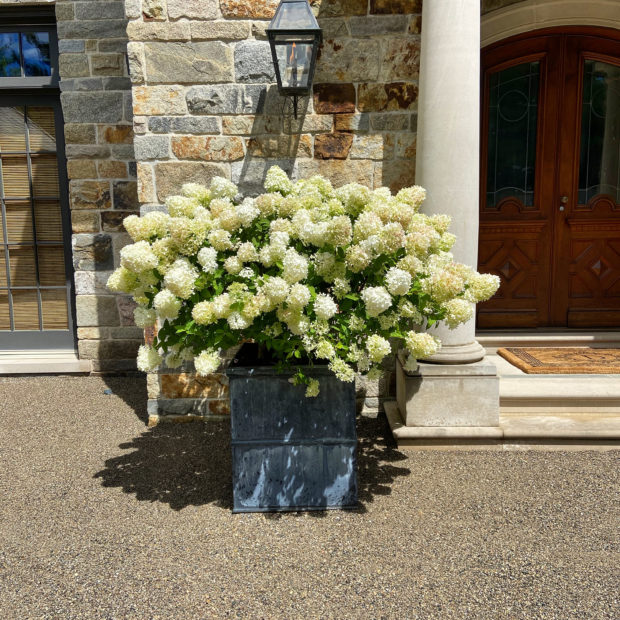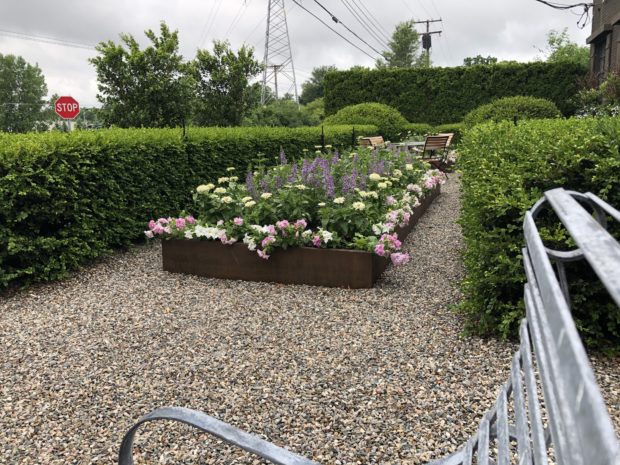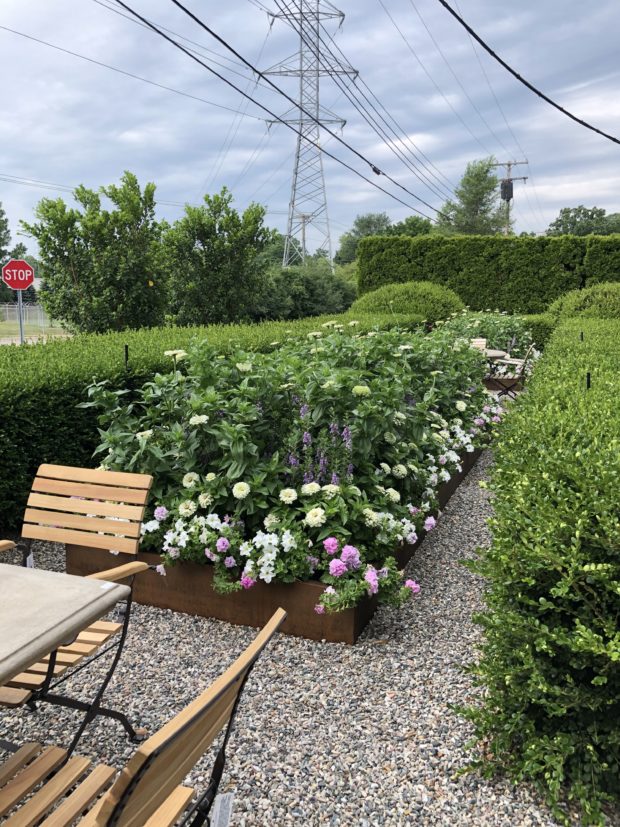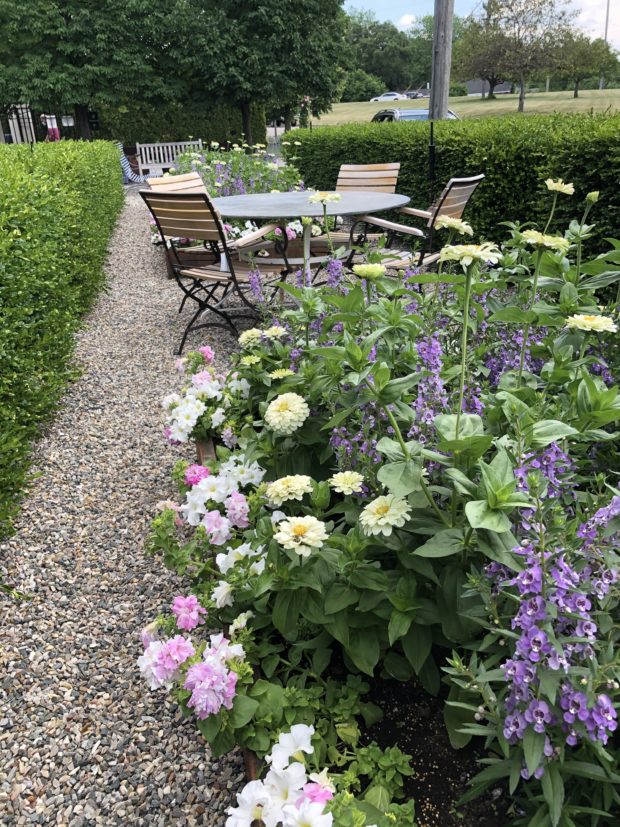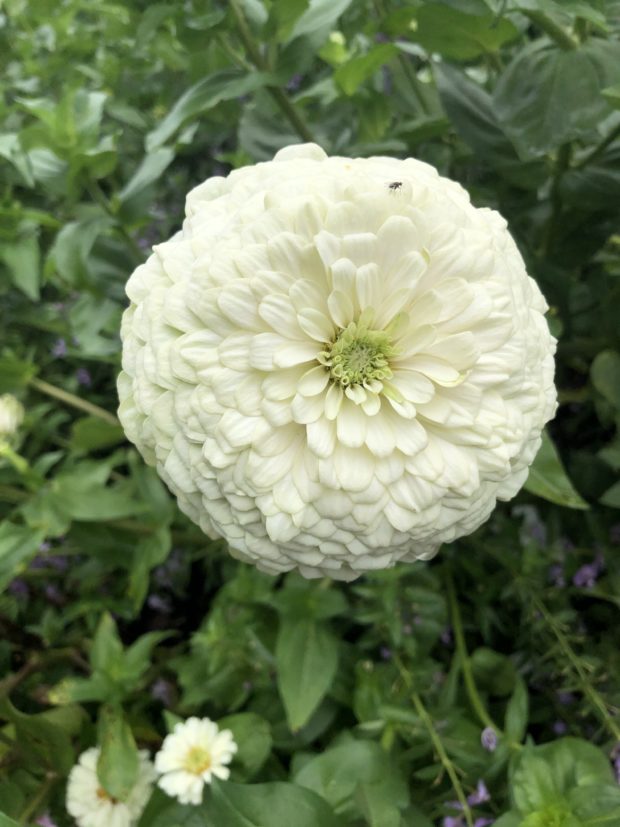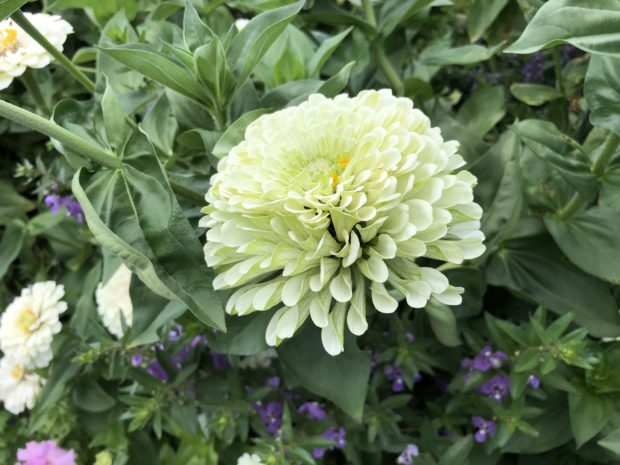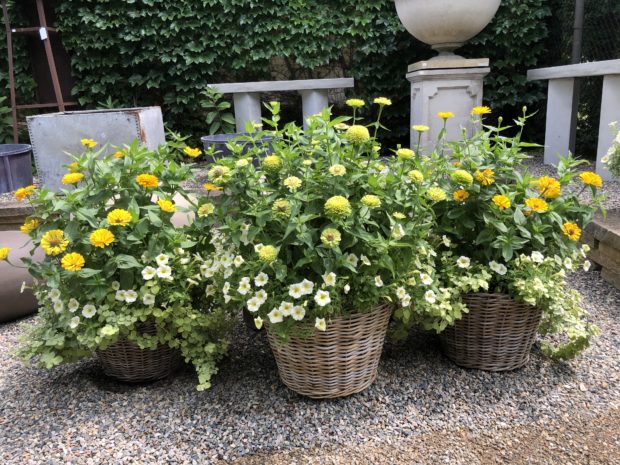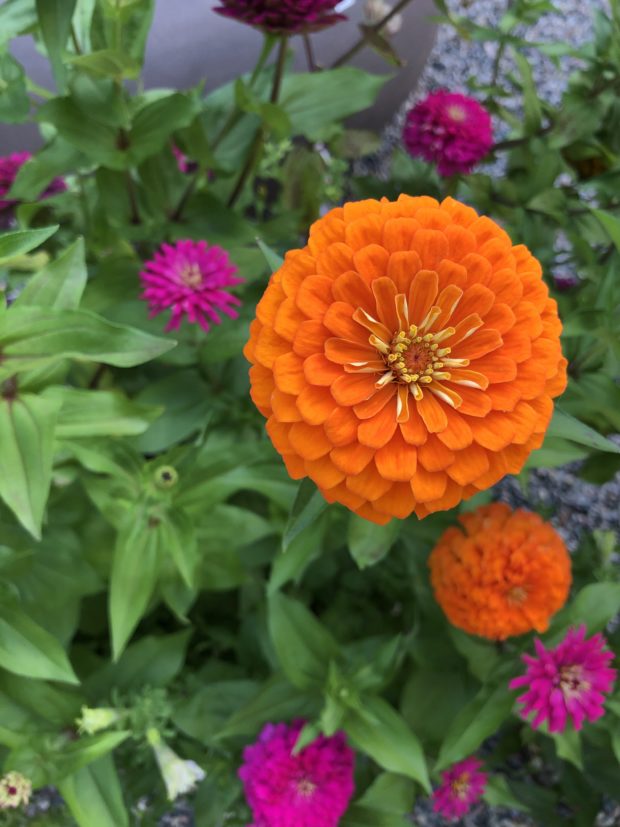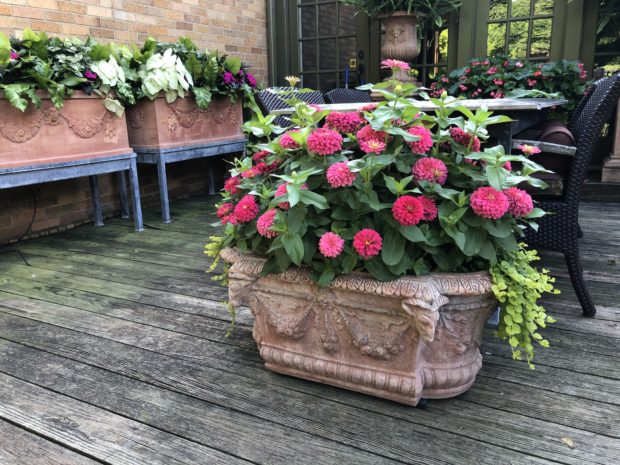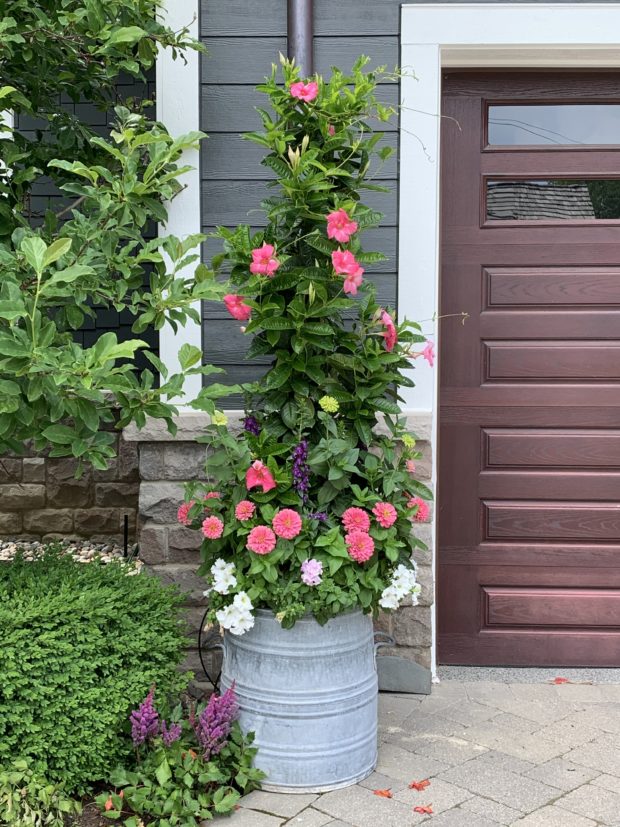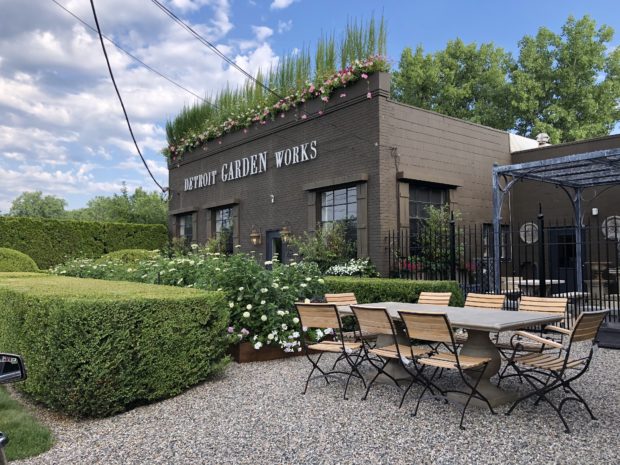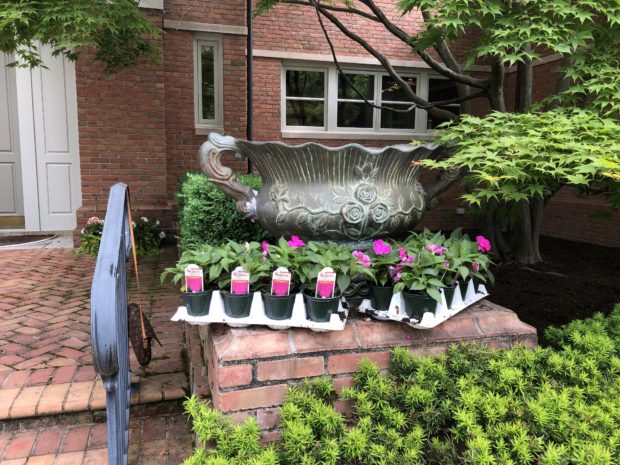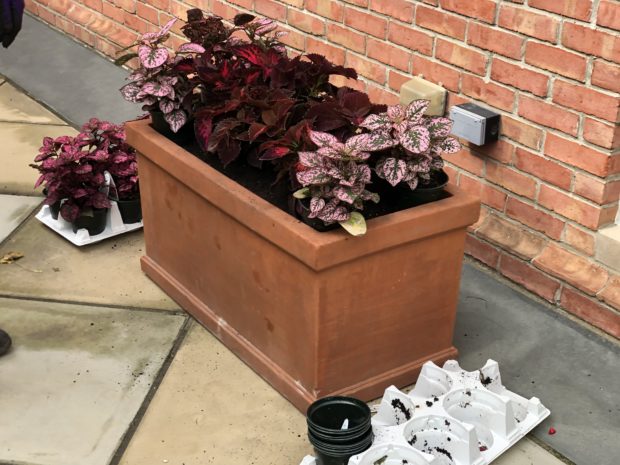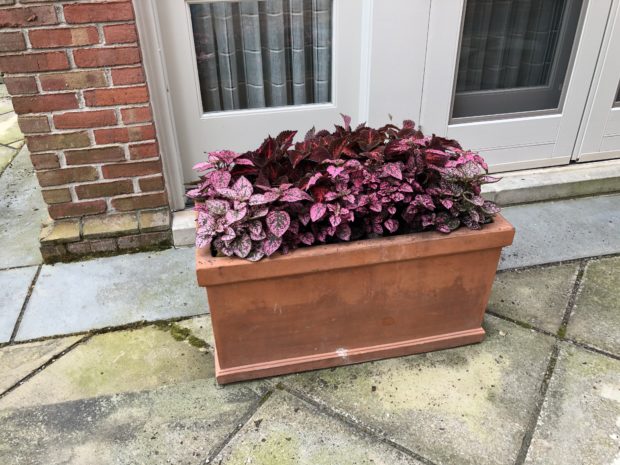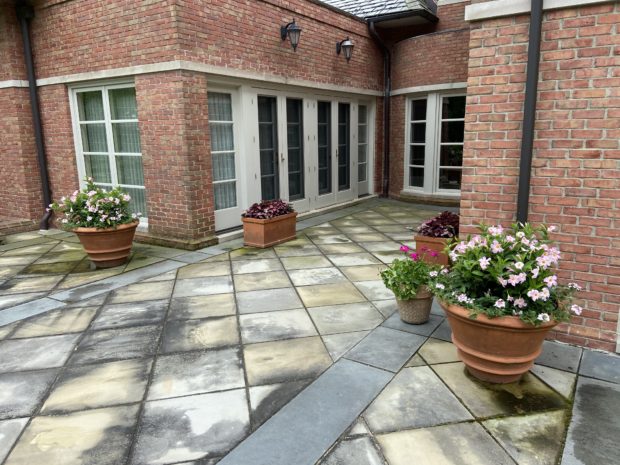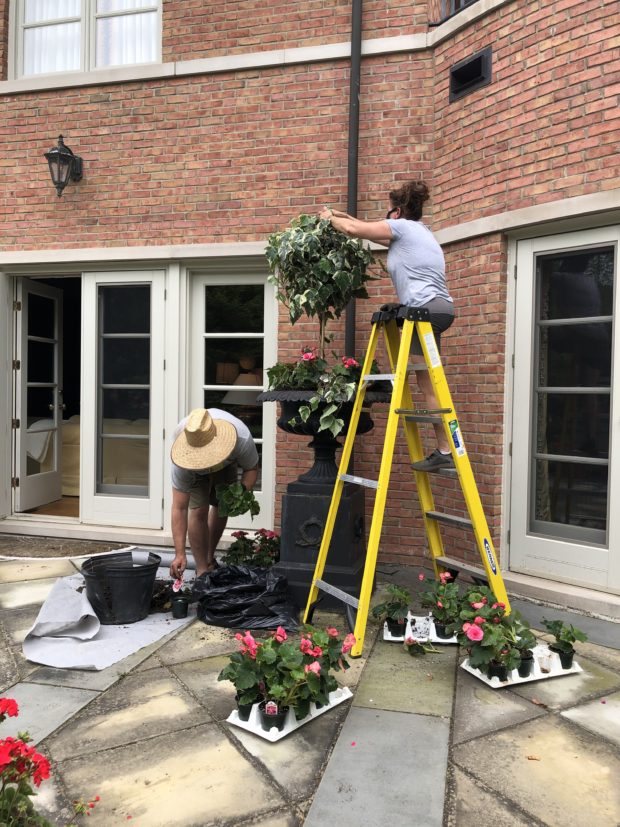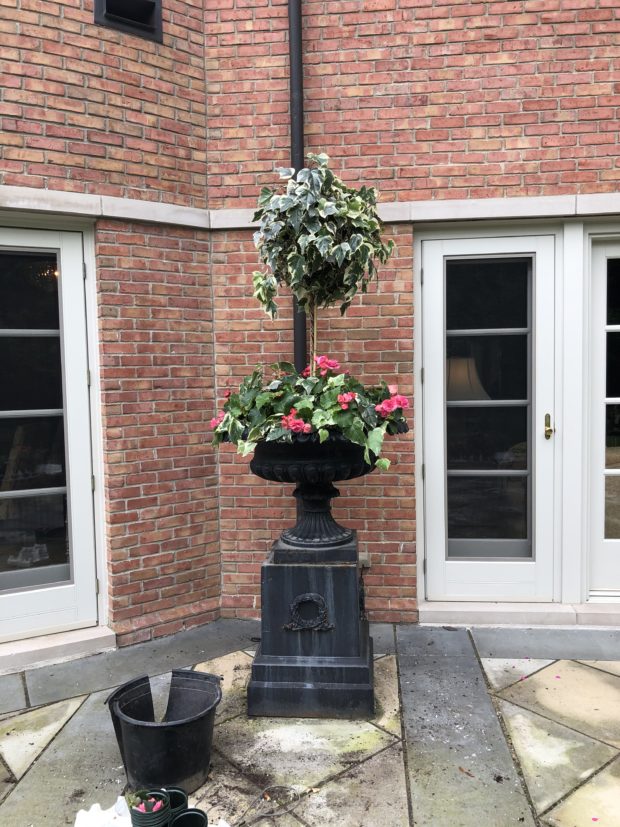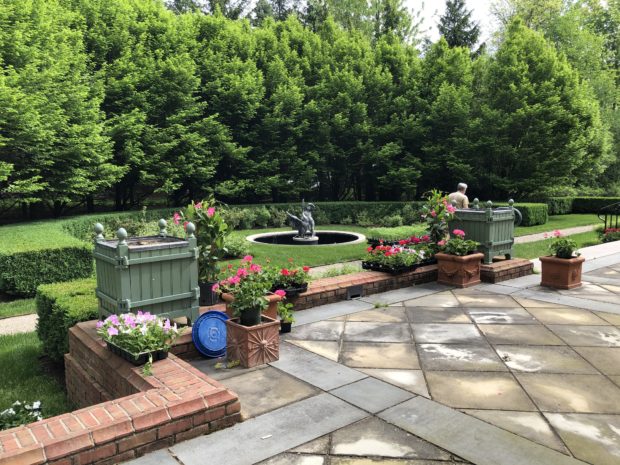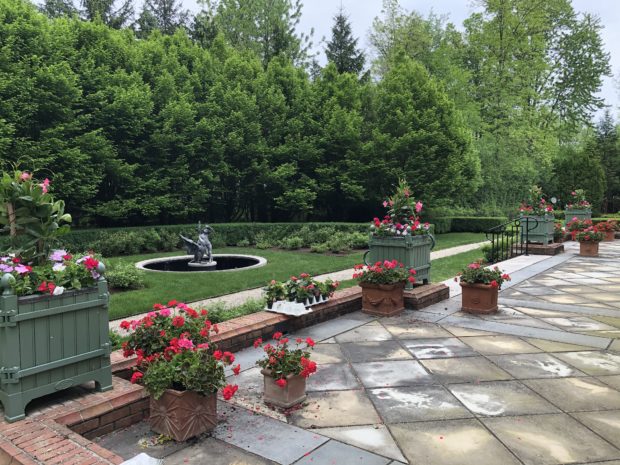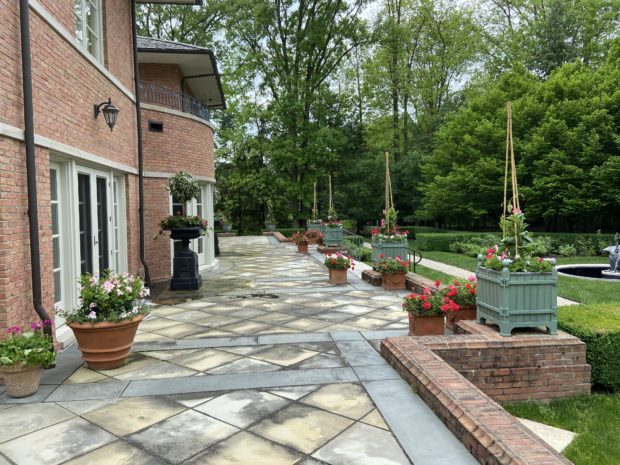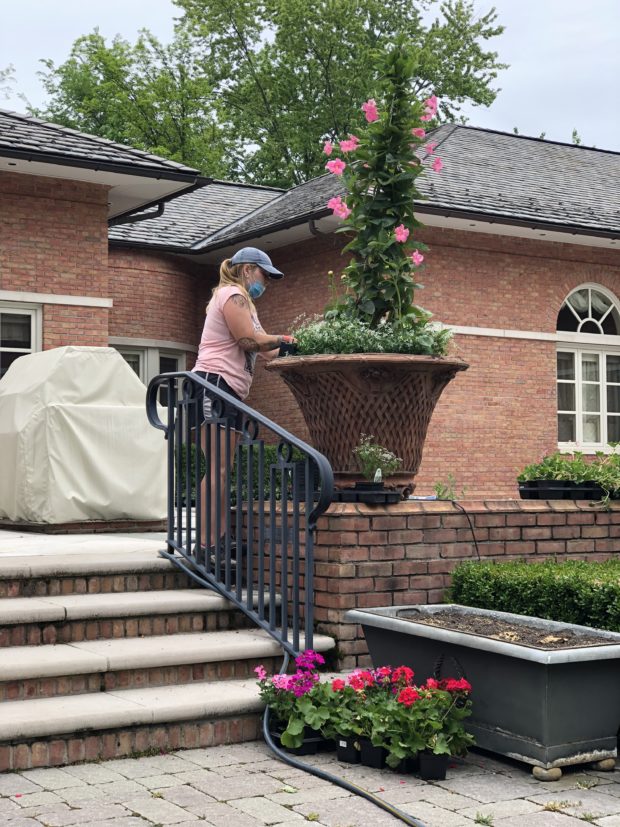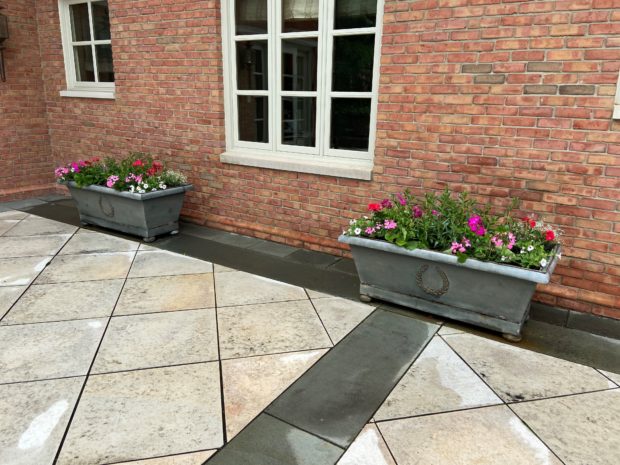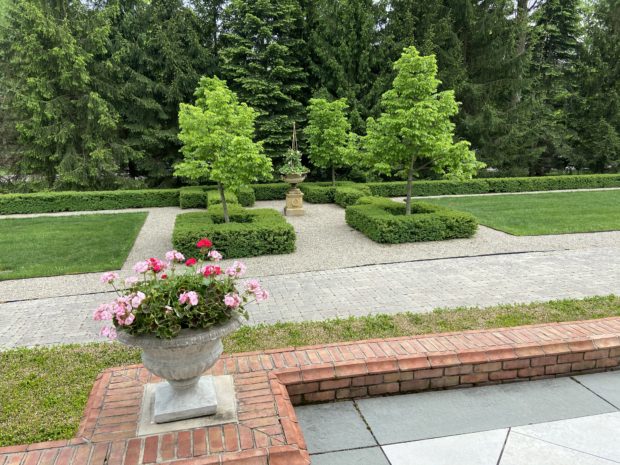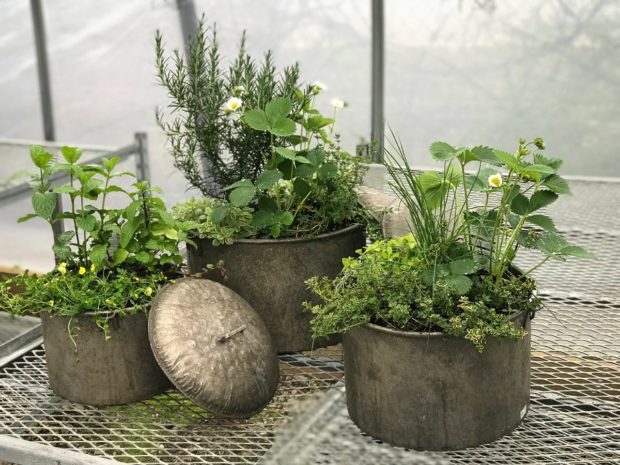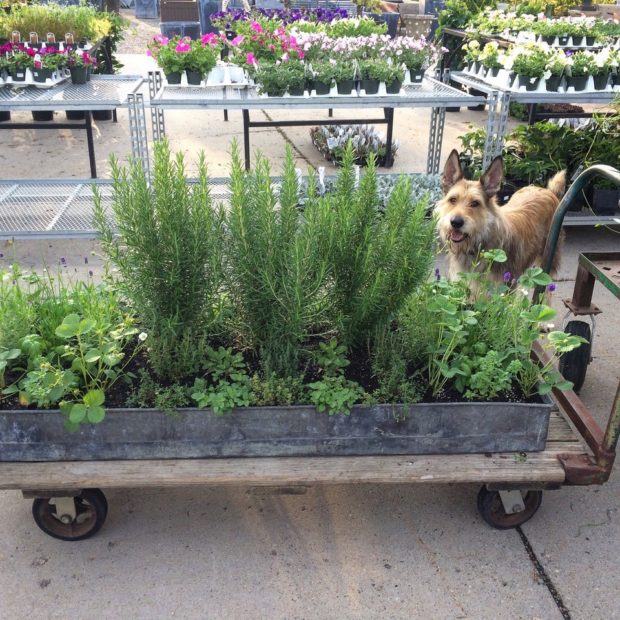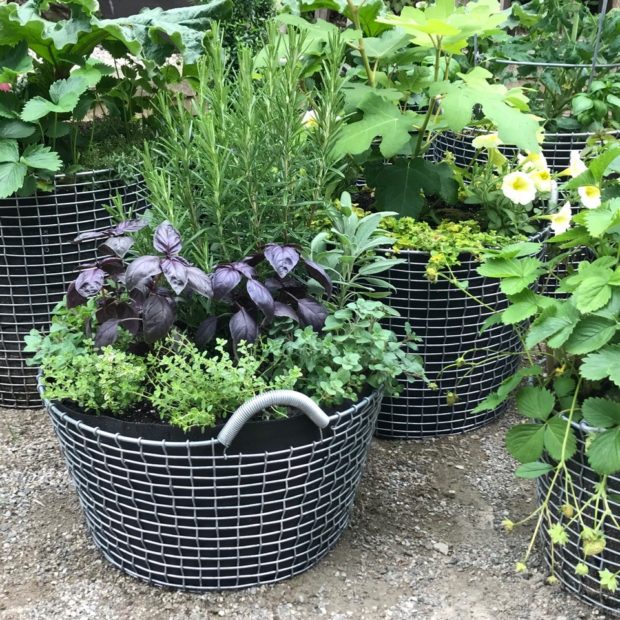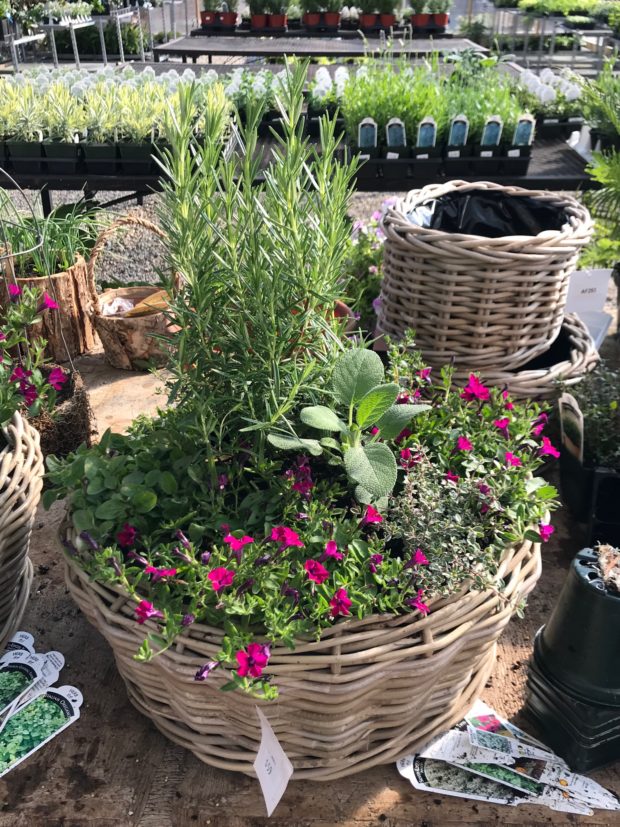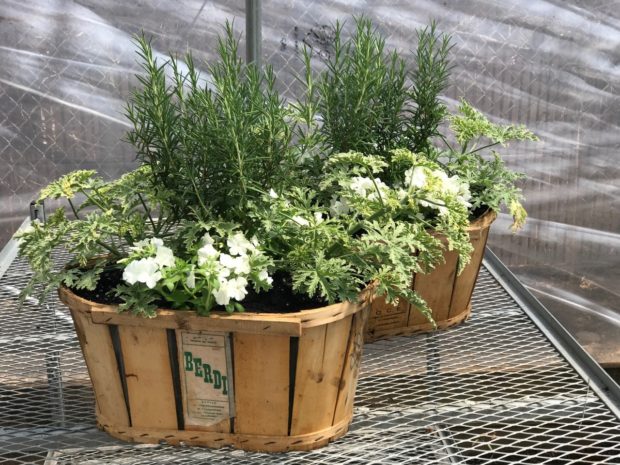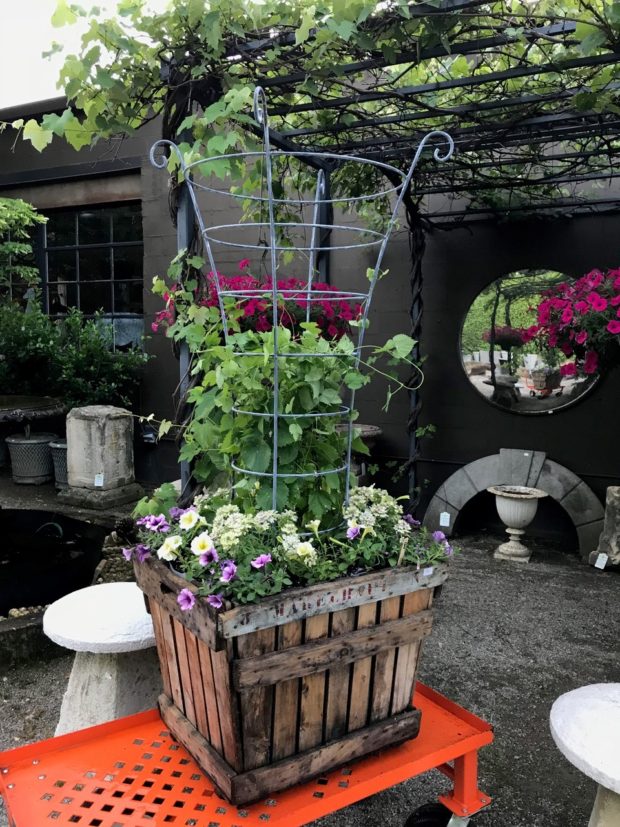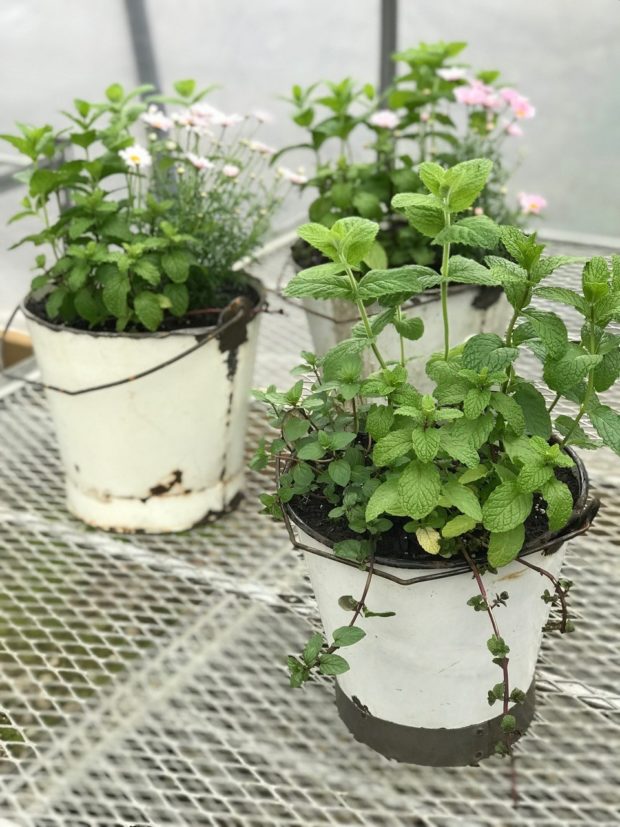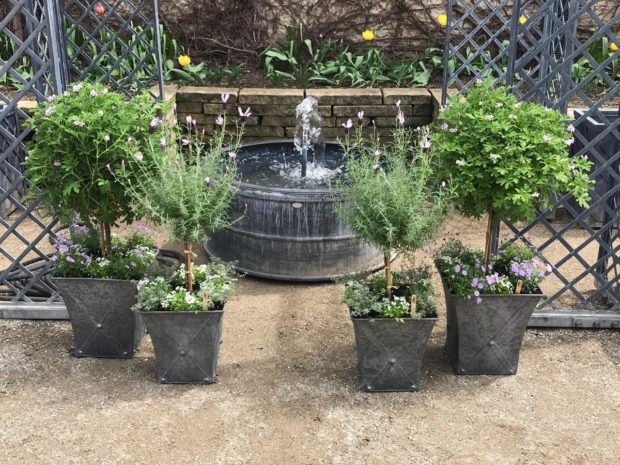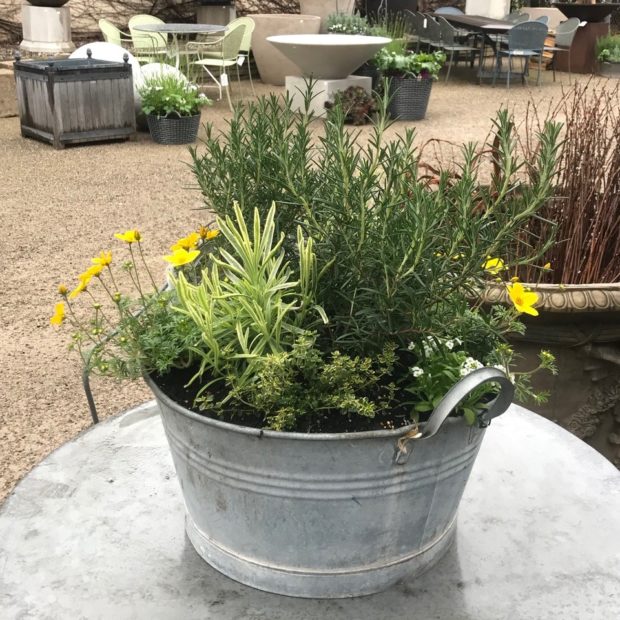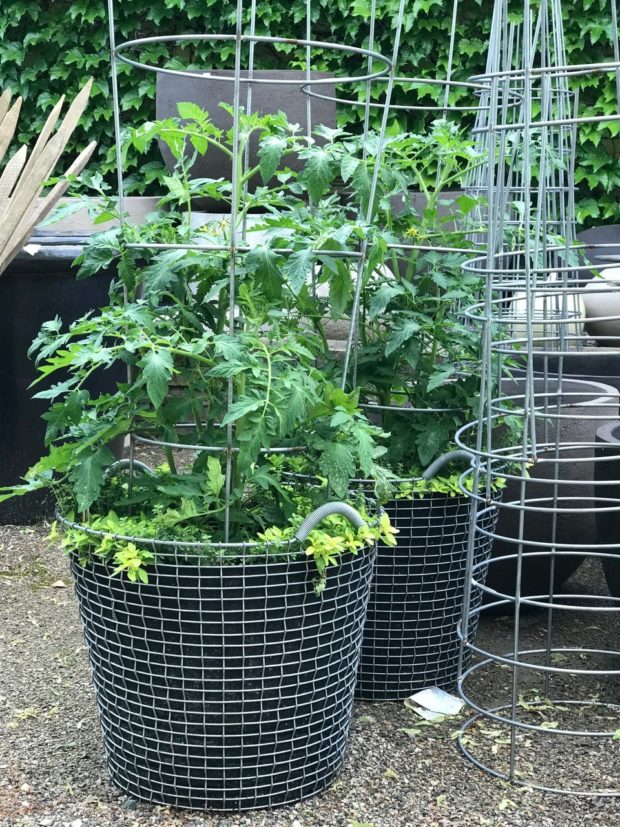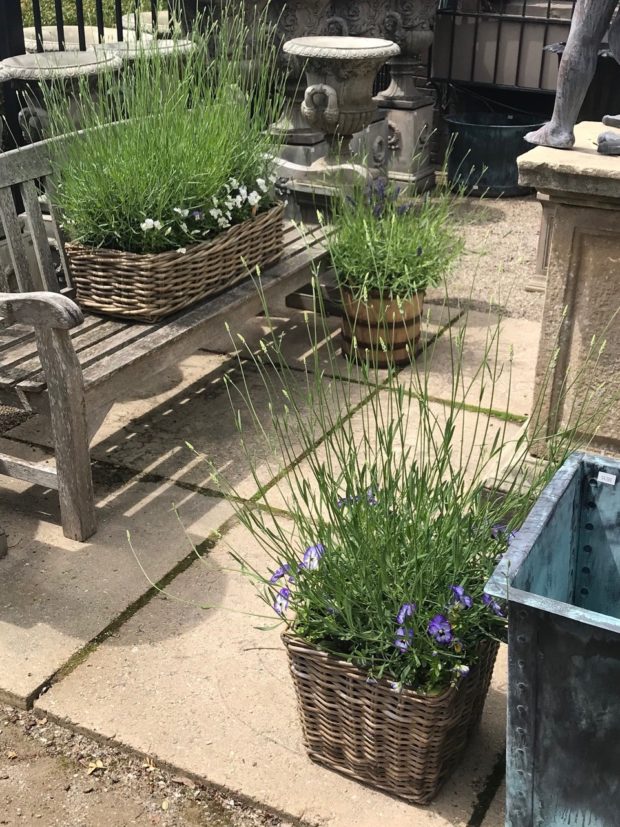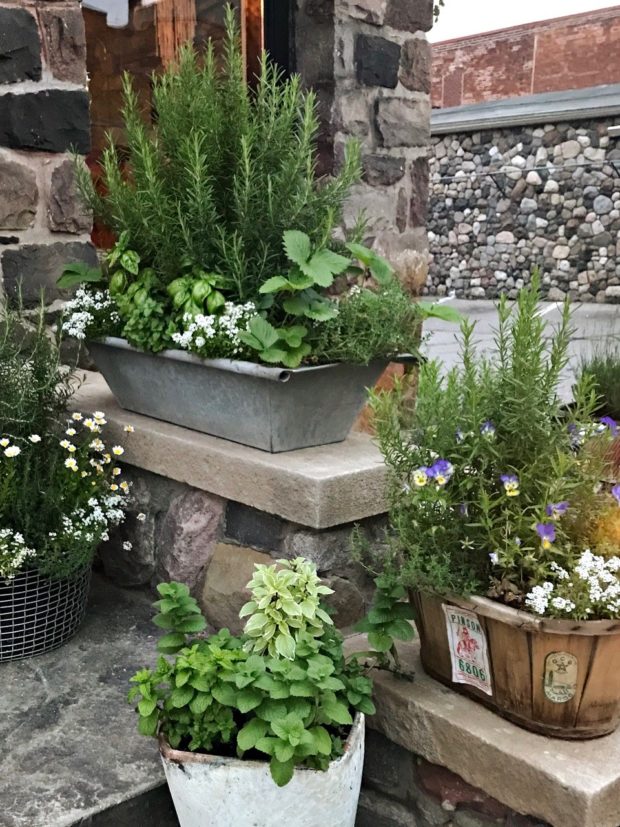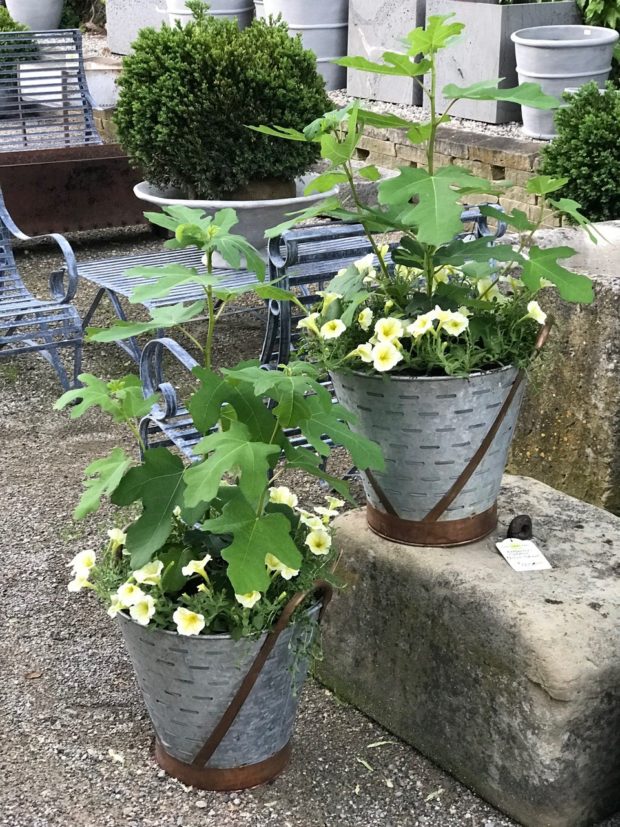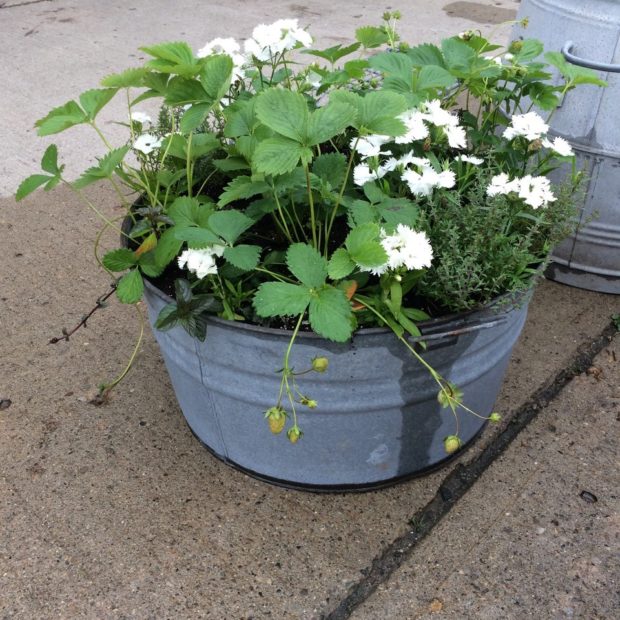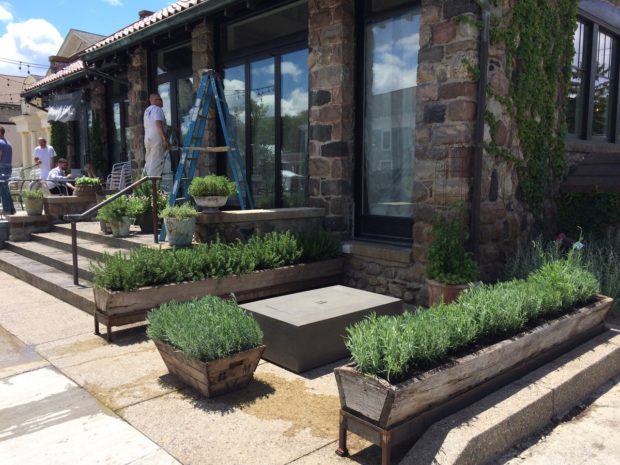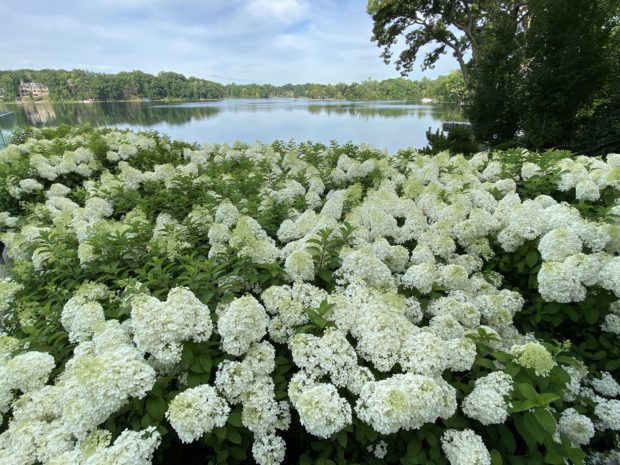 The hydrangeas in bloom this year have been beyond gorgeous. I have never seen them better, and I have been growing hydrangeas for a long time. The object of my affection and admiration are white flowering varieties that bloom on new wood. Blue and pink hydrangeas that bloom on old wood – this would be the bigleaf hydrangeas, or hydrangea macrophylla – are not truly bud hardy in my zone. Unless they have a mild winter, whilst mulched from the soil level to the tops of the branches, the flowering will be sporadic and disappointing. If yours bloom profusely and reliably in Michigan, then count your blessings. The whole point of hydrangeas in bloom is the sheer splendor that comes from abundance. A happy hydrangea is so loaded with blooms the slender stems of the shrub will bend over from the sheer weight and volume of them. If you must have blue hydrangeas in all of their splendor, then pack your bags for Nantucket, and read no further. The Bobo hydrangeas pictured above have astonishingly good care. The entire bed is on drip irrigation – essential when hydrangeas are in full sun – and that irrigation is monitored and updated frequently. I am quite sure they are fertilizing in late winter/early spring. Some apply Hollytone, by Espoma, or a slow release balanced fertilizer. The reward is an ocean’s worth of greenish white flowers.
The hydrangeas in bloom this year have been beyond gorgeous. I have never seen them better, and I have been growing hydrangeas for a long time. The object of my affection and admiration are white flowering varieties that bloom on new wood. Blue and pink hydrangeas that bloom on old wood – this would be the bigleaf hydrangeas, or hydrangea macrophylla – are not truly bud hardy in my zone. Unless they have a mild winter, whilst mulched from the soil level to the tops of the branches, the flowering will be sporadic and disappointing. If yours bloom profusely and reliably in Michigan, then count your blessings. The whole point of hydrangeas in bloom is the sheer splendor that comes from abundance. A happy hydrangea is so loaded with blooms the slender stems of the shrub will bend over from the sheer weight and volume of them. If you must have blue hydrangeas in all of their splendor, then pack your bags for Nantucket, and read no further. The Bobo hydrangeas pictured above have astonishingly good care. The entire bed is on drip irrigation – essential when hydrangeas are in full sun – and that irrigation is monitored and updated frequently. I am quite sure they are fertilizing in late winter/early spring. Some apply Hollytone, by Espoma, or a slow release balanced fertilizer. The reward is an ocean’s worth of greenish white flowers.
 That is not all. Later in the season those blooms will turn towards pink, and then rose pink. The fall display is every bit as beautiful as that in late summer. Add the yellow fall color on the leaves, and you have a visual treat that is quite spectacular. A good shrub provides interest in the garden over a long period of time. Hydrangeas are particularly generous with a long period of bloom. I leave the flower heads intact over the winter – why not? That cinnamon brown color is strikingly beautiful. Of course there will be those blooms that break off and blow around, but that cleanup is manageable.
That is not all. Later in the season those blooms will turn towards pink, and then rose pink. The fall display is every bit as beautiful as that in late summer. Add the yellow fall color on the leaves, and you have a visual treat that is quite spectacular. A good shrub provides interest in the garden over a long period of time. Hydrangeas are particularly generous with a long period of bloom. I leave the flower heads intact over the winter – why not? That cinnamon brown color is strikingly beautiful. Of course there will be those blooms that break off and blow around, but that cleanup is manageable.
 This hedge of Limelight hydrangeas was planted for a client at their restaurant many years ago. I want to say at least 10 years ago, probably more. I am quite sure that they get watered; my clients takes great care of all of their plants.The soil is that typical Oakland County Michigan airless and non-draining clay-we planted them well above grade for exactly that reason. I have no idea what pruning and feeding care they get, but I can say their maintenance company was not permitted to work this year until May. So the spring care was fast and loose. Behind me in this picture is Woodward Avenue – a main road with 3 lanes going both north and south. It is packed with automobile traffic around the clock, in the 45-50 mph range. I would say the hedge is 25 feet off the road, and endures plenty of exhaust in the summer, and an equal amount of road salt in the winter. This commercial planting is stunning.
This hedge of Limelight hydrangeas was planted for a client at their restaurant many years ago. I want to say at least 10 years ago, probably more. I am quite sure that they get watered; my clients takes great care of all of their plants.The soil is that typical Oakland County Michigan airless and non-draining clay-we planted them well above grade for exactly that reason. I have no idea what pruning and feeding care they get, but I can say their maintenance company was not permitted to work this year until May. So the spring care was fast and loose. Behind me in this picture is Woodward Avenue – a main road with 3 lanes going both north and south. It is packed with automobile traffic around the clock, in the 45-50 mph range. I would say the hedge is 25 feet off the road, and endures plenty of exhaust in the summer, and an equal amount of road salt in the winter. This commercial planting is stunning.
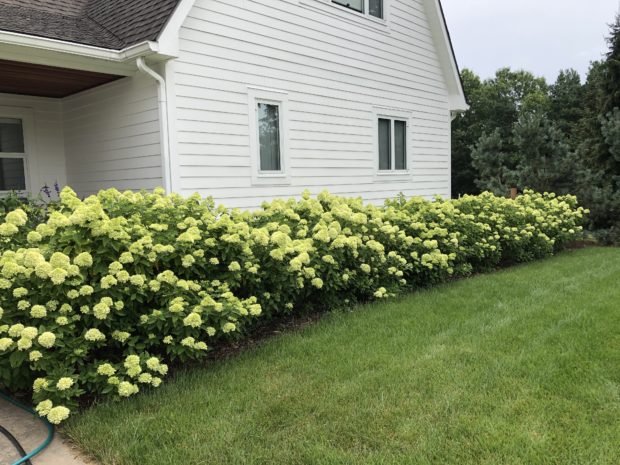 This hedge of Little Lime hydrangeas is relatively new-it was planted 4 years ago. The flowers are at that fresh green stage, as they are just beginning to bloom. This exposure is westerly, which is a great location for hydrangeas. They need at least 6 hours of sun a day to bloom profusely. I am astonished at how many articles I read that suggest that hydrangeas do well planted in the shade. I have seen plantings in shady areas that range from sporadically blooming to passable, but I have yet to see a hydrangea thrive in shade. Of all the hydrangeas, the oak leaf is the most shade tolerant. Tolerant is the key concept here. No flowering plants, with a few exceptions, love shady conditions. They tolerate them. Find a sunny spot for your hydrangeas. These Little Limes get occasional supplemental water.
This hedge of Little Lime hydrangeas is relatively new-it was planted 4 years ago. The flowers are at that fresh green stage, as they are just beginning to bloom. This exposure is westerly, which is a great location for hydrangeas. They need at least 6 hours of sun a day to bloom profusely. I am astonished at how many articles I read that suggest that hydrangeas do well planted in the shade. I have seen plantings in shady areas that range from sporadically blooming to passable, but I have yet to see a hydrangea thrive in shade. Of all the hydrangeas, the oak leaf is the most shade tolerant. Tolerant is the key concept here. No flowering plants, with a few exceptions, love shady conditions. They tolerate them. Find a sunny spot for your hydrangeas. These Little Limes get occasional supplemental water.
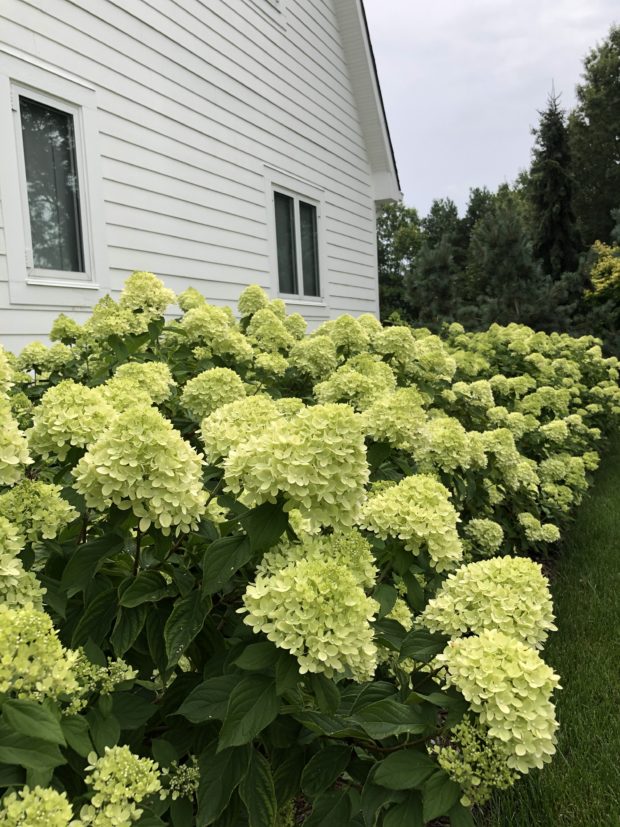 I get no end of questions about spacing. I have seen spacing recommended anywhere from 3′ to 8′. This hedge was spaced at 3 feet on center, with 2 rows of plants in staggered positions. The bed is 9′ in depth, and the Little Limes have filled that right up. An 8′ spacing on a Limelight hedge will produce a series of shaggy ball shapes. A closer spacing will produce a more uniform look to the hedge. I think spacing is primarily a matter of personal taste. If you are willing to wait a few years for a group of hydrangeas to grow together, then space them out. If you are after a densely growing hedge then space them closer. If there is a specific space to fill, then space to fit that particular space. Do I think one spacing is superior and produces more healthy plants than another – sun and water being comparable – ? No.
I get no end of questions about spacing. I have seen spacing recommended anywhere from 3′ to 8′. This hedge was spaced at 3 feet on center, with 2 rows of plants in staggered positions. The bed is 9′ in depth, and the Little Limes have filled that right up. An 8′ spacing on a Limelight hedge will produce a series of shaggy ball shapes. A closer spacing will produce a more uniform look to the hedge. I think spacing is primarily a matter of personal taste. If you are willing to wait a few years for a group of hydrangeas to grow together, then space them out. If you are after a densely growing hedge then space them closer. If there is a specific space to fill, then space to fit that particular space. Do I think one spacing is superior and produces more healthy plants than another – sun and water being comparable – ? No.
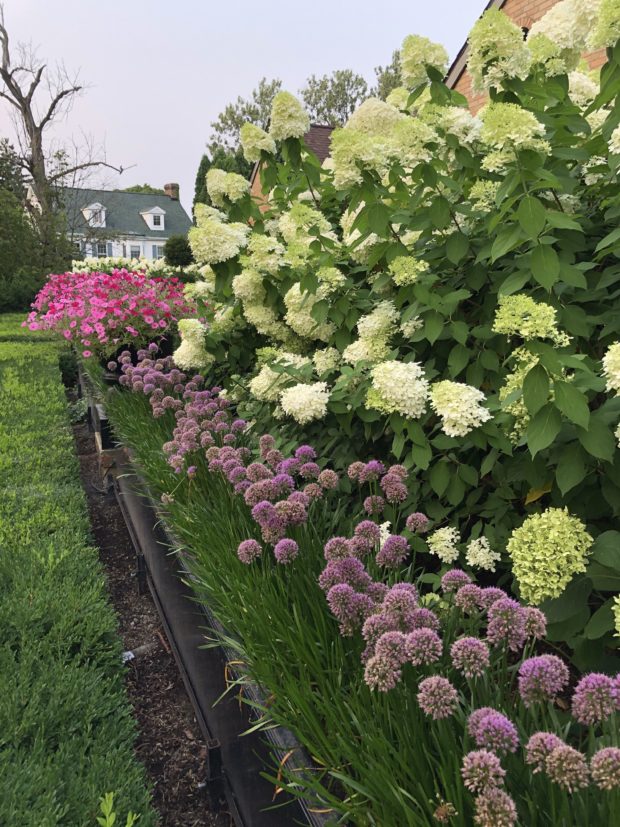 I have 2 blocks of Limelights at home that have been in the ground for close to 20 years. They were spaced at 30″. They have been healthy and heavy blooming every year. I have had Japanese beetle damage to the leaves, and scorch when I didn’t water enough, but they perform the same as a group spaced at 4 feet apart. I can vary the style and extent of my pruning every year, and not be able to see any difference in the blooming plants. A good friend has planted and maintained miles of blocks of Limelights in the median on a major north/south road in my area. They are the best blooming hydrangeas I have ever seen, in a year of great blooming hydrangeas. I asked her about the care. They routinely feed with Hollytone, and they do water. The only difference this year was that they did not prune as hard as usual. Do I think this made the difference in the performance? Maybe, or maybe not. Do I think the weather conditions were perfect? Our season has been very hot and dry. Would I expect this to be great for hydrangeas? Not really.
I have 2 blocks of Limelights at home that have been in the ground for close to 20 years. They were spaced at 30″. They have been healthy and heavy blooming every year. I have had Japanese beetle damage to the leaves, and scorch when I didn’t water enough, but they perform the same as a group spaced at 4 feet apart. I can vary the style and extent of my pruning every year, and not be able to see any difference in the blooming plants. A good friend has planted and maintained miles of blocks of Limelights in the median on a major north/south road in my area. They are the best blooming hydrangeas I have ever seen, in a year of great blooming hydrangeas. I asked her about the care. They routinely feed with Hollytone, and they do water. The only difference this year was that they did not prune as hard as usual. Do I think this made the difference in the performance? Maybe, or maybe not. Do I think the weather conditions were perfect? Our season has been very hot and dry. Would I expect this to be great for hydrangeas? Not really.
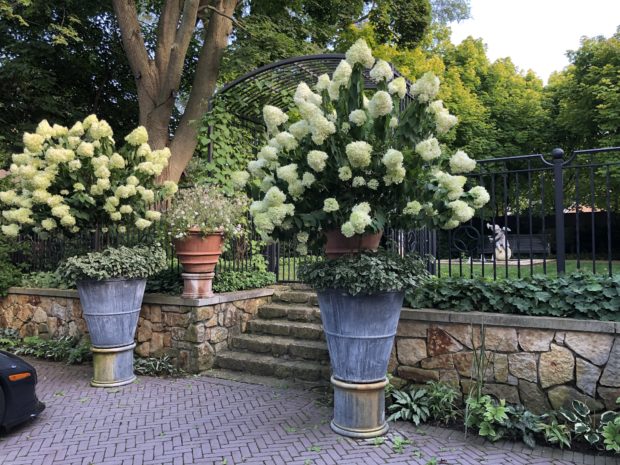 Hydrangeas will tell you when they need water. Those big thin leaves clinging to the stems-as in the above picture of a hydrangea on standard – is a clear SOS. I do err on the side of water generosity, as I believe that plants stressed from being too dry perform at a less than optimal level. Newly planted hydrangeas need very careful monitoring for water. They grow so fast that most potted plants available for sale are root bound. If that root ball goes dry soon after planting, it is of no consequence how wet the soil is a foot away. The hose needs to be aimed directly at the crown of the plant.
Hydrangeas will tell you when they need water. Those big thin leaves clinging to the stems-as in the above picture of a hydrangea on standard – is a clear SOS. I do err on the side of water generosity, as I believe that plants stressed from being too dry perform at a less than optimal level. Newly planted hydrangeas need very careful monitoring for water. They grow so fast that most potted plants available for sale are root bound. If that root ball goes dry soon after planting, it is of no consequence how wet the soil is a foot away. The hose needs to be aimed directly at the crown of the plant.
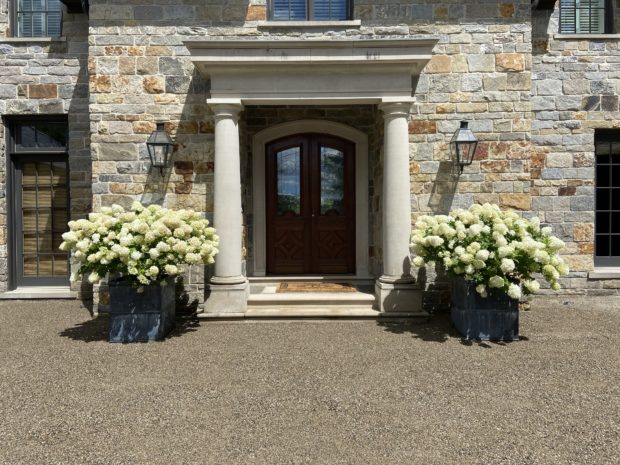 This is all by way of saying that insofar as gardening with hydrangeas is concerned, various approaches to their cultivation can produce healthy and beautiful plants. They are so versatile in the landscape, as this pair of pots planted with Limelights can attest. Most and best of all, they are forgiving of neglect, and respond strongly to attention and care.
This is all by way of saying that insofar as gardening with hydrangeas is concerned, various approaches to their cultivation can produce healthy and beautiful plants. They are so versatile in the landscape, as this pair of pots planted with Limelights can attest. Most and best of all, they are forgiving of neglect, and respond strongly to attention and care.
